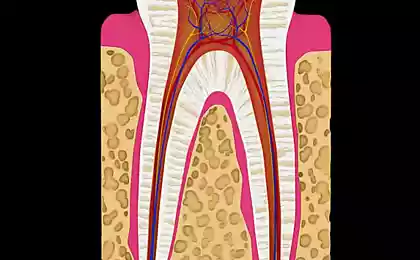506
What danger can bear the rain drops
A group of engineers published in the journal Nature Communications article, which explains how the smell of "raw land" covers the distance from the soil to your nose. It's all in the chemical called geosmin, which is responsible for specific aroma of the human sense of smell is so sensitive to it that we are able to experience this smell when a trillion other molecules have only five molecules geosmin. Scientists know about it for a long time, however, was unknown to them, it is associated with rain drops.

Using high-speed cameras, and fluorescent dyes, the researchers removed the drops of water falling on different types of soil, which contained a variety of bacteria. The result was seen as drops delicately "catapulting" germs in the air. When the drop falls to the ground with a certain velocity, it encloses tiny air bubbles, each no wider than a human hair.
As the air bubbles rising from the bottom of the pool when you swim in it man, these, too, tend upwards, and therefore drop pierce through and explode when they reach the surface. The result is a makeshift fountain, which along with thin streams of water sends in the air and bacteria.
The team found that upon impact with the ground a drop of water into hundreds of little droplets, each of which contains thousands of live bacteria. In these microscopic droplets of bacteria can live for another hour, while the wind carries them across the County. Cullen Buoys, one of the researchers on the project, said that the next step will be figuring out how far you can travel bacteria.
Bacteria is not so terrible for a person, but there is a reason why the Buoys and colleagues began the study. They contacted a British scientist, concerned about the spread of melioidosis in the rainy season in the South-East Asia and Northern Australia. This infectious disease is treatable, but without proper antibiotics, the mortality rate can reach 90% (that is, from 10 ill - will die 9). Scientists have linked the spread of infection with precipitation and now, when the mechanism of its propagation became known, promised to take all appropriate measures. published
P. S. And remember, only by changing their consumption — together we change the world! ©
Source: www.popsci.com/raindrops-launch-bacteria-into-air#page-2

Using high-speed cameras, and fluorescent dyes, the researchers removed the drops of water falling on different types of soil, which contained a variety of bacteria. The result was seen as drops delicately "catapulting" germs in the air. When the drop falls to the ground with a certain velocity, it encloses tiny air bubbles, each no wider than a human hair.
As the air bubbles rising from the bottom of the pool when you swim in it man, these, too, tend upwards, and therefore drop pierce through and explode when they reach the surface. The result is a makeshift fountain, which along with thin streams of water sends in the air and bacteria.
The team found that upon impact with the ground a drop of water into hundreds of little droplets, each of which contains thousands of live bacteria. In these microscopic droplets of bacteria can live for another hour, while the wind carries them across the County. Cullen Buoys, one of the researchers on the project, said that the next step will be figuring out how far you can travel bacteria.
Bacteria is not so terrible for a person, but there is a reason why the Buoys and colleagues began the study. They contacted a British scientist, concerned about the spread of melioidosis in the rainy season in the South-East Asia and Northern Australia. This infectious disease is treatable, but without proper antibiotics, the mortality rate can reach 90% (that is, from 10 ill - will die 9). Scientists have linked the spread of infection with precipitation and now, when the mechanism of its propagation became known, promised to take all appropriate measures. published
P. S. And remember, only by changing their consumption — together we change the world! ©
Source: www.popsci.com/raindrops-launch-bacteria-into-air#page-2























